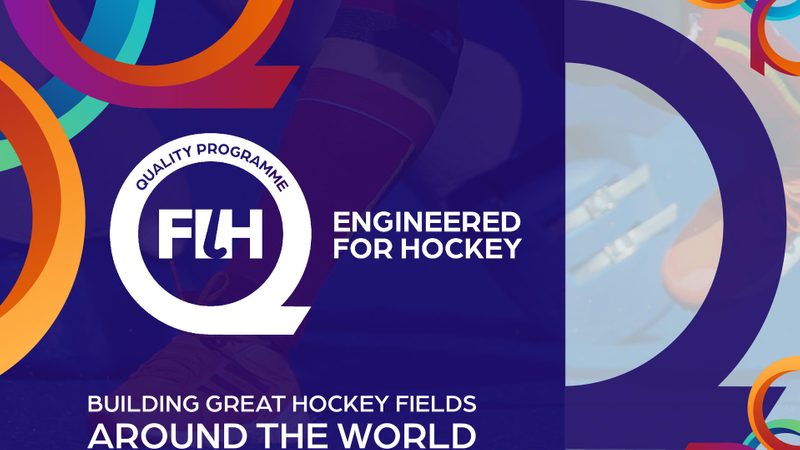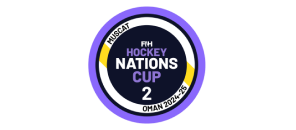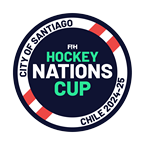
More than 90 participants from around the world joined in the FIH Quality Programme webinar, led by Alastair Cox, the FIH Facilities and Quality Programme Manager.
Among the key messages to emerge from the two-hour presentation was the continued development of, and plans for, Hockey5s; the drive towards pitch options that reduced or removed the need for water; and the importance of continuing to update, review and then implement quality standards across a growing range of equipment and facilities. In other words, the main drivers for Cox and his team is to lead and guide both customers and suppliers towards ever higher levels of sustainability, cost effectiveness and safety awareness.
Just as the audience reflected a global audience, so too does the FIH Quality Programme’s sphere of influence. While the pandemic has reduced the number of products that were approved this year by a third, the spread of certified hockey fields still covers all continents.
While the pandemic might have restricted or halted physical work on facilities and subsequent certification, the FIH Quality Programme has been busy expanding its reach and developing its message.
The Quality Programme now goes beyond quality facilities to include FIH Approved Field Equipment, including: hockey goals, Technical Officials’ booth, team shelters, rebound boards for Hockey5s, indoor hockey sideboards and indoor hockey goals.
The FIH has also worked with Loughborough University to develop categories of hockey balls, with top quality balls, known as Global Category Balls, for international, top tier events; and a National Category Ball for lower level internationals and elite club matches and training.
As with the FIH Approved Hockey Turfs, Approved Field Equipment recognises high quality sports equipment that performs well, is safe to use, has good durability and is produced by quality manufacturers. The existence of such standards provides reassurance to the market place and ensures equipment meets the needs from international to community hockey provision.
Joining Cox for the presentation was FIH Sport and Development Director Jon Wyatt, who started his presentation by acknowledging what a challenging time the global hockey community had been living through.
Because of the stop, start nature of international competition throughout 2020, Wyatt said the next three years would be very busy. The usual four-year Olympic cycle, leading into Paris 2024, would be a three-year cycle and within that time frame all the other competitions, including the men’s and women’s World Cups and continental championships, would need to be accommodated.
“Hockey is fortunate”, said Wyatt, “That, unlike many sports, we know the teams that will be competing in Tokyo. Several sports have yet to hold their qualifying events. At least our nations and athletes know they have qualified and can prepare accordingly.”
For the future, Wyatt spoke of the importance of HOCKEY5s for opening up the sport to a new audience. The attendees on the webinar were shown a mock-up of how a HOCKEY5s tournament in the centre of Lausanne might look.
“It’s a growing format, to complement the other formats.” said Wyatt. “It will attract new audiences, with showcase events played in iconic city venues. We are encouraging people to play it on any facility and any surface.”
Supporting the drive to encourage investment in HOCKEY5s facilities, new guidance documents are being produced and will be available soon on the FIH website.
Hockey5s is one way in which hockey can both encourage more participants and demonstrate its ability to adapt and become more sustainable. This, said the Sport and Development Director, was just one of many ways that hockey was pushing forwards in sustainability.
“There is such a lot of good activity already happening within hockey across all areas of Sustainability as defined by the IOC – Economic, Environmental and Social.” he said, “We now need to bring it all together, recognise this existing work, identify areas that we need to improve, set targets across all areas and report regularly against it.”
The final part of Wyatt’s message was around the transition from wet pitches to dry pitches in a bid to reduce water usage within the sport. The very clear message was that this would be a gradual transition and organisations that had just invested in wet pitch facilities would not be expected to transition until their pitch facilities reached the end of their natural life-span.
While the range of equipment and the vision for the future has been very much at the core of the work being done by Alastair Cox and his team, the marketing team of Marianela O’Mahony and Nais del Todesco have been getting creative around the marketing of the Quality Programme.
Looking for a way to modernise the logo and marketing of the programme, the team tapped into a rich colour palette that will become synonymous with the work of the Quality Programme. Hanging around the FIH traditional red and blue colour scheme, the marketing department have drawn on oranges, greens and purples to enhance the look and feel of the branding.
These colour schemes, which will extend across all social media channels as well as certificates, will serve the dual purpose of signposting aspects and categories within the Quality Programme as well as reflecting the dynamic, progressive and creative work being done to ensure hockey remains at the forefront of innovation and excellence. They will also feature prominently on the Quality Programme’s home page at www.fih.ch/qp.























